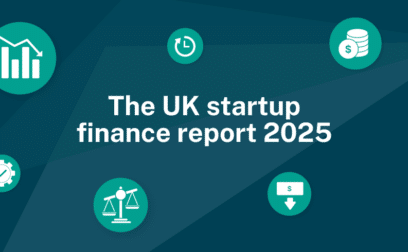Selective invoice discounting is a type of invoice finance that allows you access to cash for business operations through lenders as a loan from unpaid invoices. It’s similar to spot factoring in that it allows you to finance specific invoices (or customers). The key difference is that your customers are not usually aware you are using invoice discounting, whereas with factoring, the lender will take over credit control for your customers.
Selective invoice discounting, like spot factoring, allows you to unlock finance by selling specific unpaid invoices at a discount to a lender in return for a cash advance. You are not handing your entire sales ledger over to a lender as you would be with confidential invoice discounting or factoring.
How does selective invoice discounting work?
- You decide which invoice(s) you want to finance.
- You send a copy of the invoice(s) to your lender (e.g., invoice discounting provider) for approval.
- The lender quotes you a fee (a percentage of the total invoice).
- The lender gives you an advance payment (up to 95%) of the value of each invoice.
- After the customer pays an invoice, the lender gives you the balance of that invoice minus their fee.
When you issue an invoice, depending on your terms (or the terms imposed by your customer), you may have to wait for as long as 120 days for the payment to arrive in your bank account. Even though you have fulfilled your side of the transaction, you can’t access the value, which can seriously hinder your cash flow.
Invoice finance helps your company avoid this problem by unlocking that value, sometimes within 24 hours. A lender advances you the money so you can put it straight to work in your business or use it to pay bills or salaries.
This can be useful if you take large orders from one customer, but your other invoices are smaller or irregular. By using selective invoice finance, you can get advances for your large invoices, leaving the smaller ones unaffected.
As with all types of invoice finance, your cash advance is a percentage of each invoice’s value. Once your customer has paid an invoice, the lender pays you the remaining balance minus their fee.
With both selective invoice discounting and spot factoring, the individual invoices you choose to finance don’t have to be from the same customer—you decide which ones you finance and which ones you choose to handle yourselves.
Unlike factoring, invoice discounting allows you to keep control over your sales ledger and client relationships. It’s confidential.
Invoice discounting
Invoice discounting is the simplest type of invoice finance. It involves a lender advancing you money against unpaid invoices and charging a fee based on the value. This form of finance is suitable for bigger companies with a relatively high revenue as it allows them to secure funding against their entire sales ledger.
Invoice discounting is confidential, so your customers don’t know you’re using their invoice as collateral. Your company remains in charge of its own credit collection. It’s also considered riskier so your lender may require evidence that your customers pay promptly and you have in-house capacity to chase outstanding payments.
Invoice factoring
Invoice factoring also lets bigger companies borrow money against their sales ledger, but it’s different to invoice discounting because the process is disclosed. The lender takes control of your credit collection and deals directly with your customers. They pay the lender, who then forwards you the balance less their fee.
Invoice finance can benefit smaller businesses as it means they don’t have to chase their outstanding payments, although they have to prove to the lender they generate a reliable revenue. However, it may not be cost-effective for SMEs with fluctuating cash flows.
Selective invoice financing
Selective invoice financing lets your company borrow against specific invoices, rather than your entire sales ledger. This form of invoice finance is suitable if your company generates a significant proportion of its income from large, steady customers, and you only want to finance those invoices. Selective invoice financing can also help SMEs raise working capital if they have fluctuating cash flows, as borrowing against their sales ledger may not be cost-effective.
Selective invoice financing comes in two forms: selective invoice discounting and spot factoring.
Spot factoring
Spot factoring allows you to borrow money against specific unpaid invoices rather than your sales ledger, so it’s also suitable for companies with at least a few large customers. The main difference with selective invoice discounting is that spot factoring is disclosed. You hand over control of the invoices you choose to finance to the lender who collects payment from your customer and forwards your company the balance less its fee. Spot factoring may suit SMEs that don’t have the resources to chase outstanding payments and are happy to let a lender take the responsibility on their behalf.
Confidential invoice finance
Confidential invoice finance is a suitable funding option if you prefer your customers to remain unaware that you’re securing finance against their invoices.
Confidential invoice finance refers to forms of invoice finance that aren’t disclosed to your customers. We’ve already described invoice discounting, but confidential invoice factoring and CHOCs (Customer Handles Own Collections) are other examples of this type of finance.
CHOCs (Customer Handles Own Collections)
CHOCs, short for Customer Handles Own Collections, is a cross between invoice discounting and invoice factoring. As with invoice discounting, you deal directly with your own customers. However, like invoice factoring, your customers pay the lender instead of your company, so they know you’re using their invoices to secure working capital.
CHOCs are suitable if you’d like to maintain a direct relationship with your client or for early-stage companies that don’t qualify for invoice discounting, as long as they can prove they have the in-house capacity to chase outstanding payments. They can also offer a more cost-effective option for companies with lots of small customers.

































 yet? Register here!
yet? Register here!